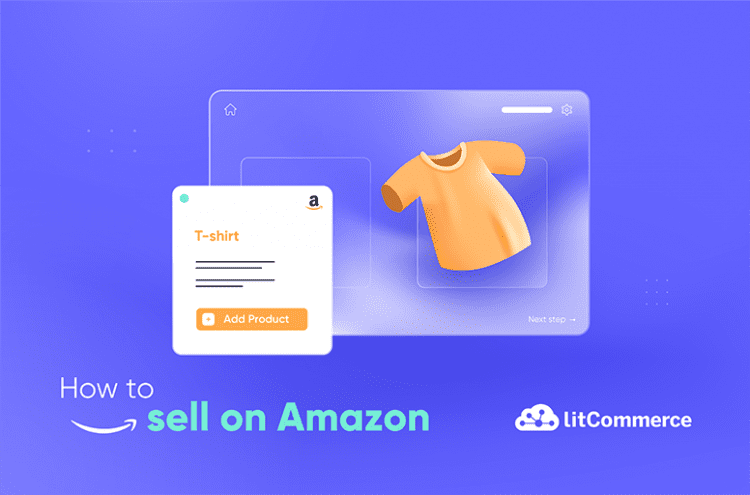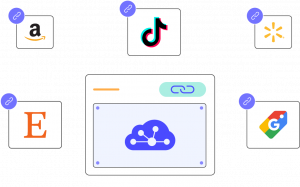Selling on Amazon is a popular way to earn extra income. You may have seen 1 or 2 videos about Amazon sellers showing their 7-figure revenues. Well, selling on Amazon is totally worth it and does help many people get rich. That’s because Amazon is still the top 1 online marketplace, with approximately 2.7 billion monthly visitors and 170 million Prime members in the US alone.
With that being the case, learning how to sell on Amazon can be your very first step to start making money online. Here are 5 steps to become an Amazon seller:
- Step 1: Choose your Amazon business model
- Step 2: Choose what to sell on Amazon
- Step 3: Start selling on Amazon
- Step 4: List your products to sell on Amazon
- Step 5: Set up your fulfillment while selling on Amazon
A Complete Guide to Sell on Marketplaces
Besides Amazon, we support sellers to kickstart their journey on trending marketplaces like TikTok Shop, eBay, Etsy, and more. Check our guide now!
Wondering how much Amazon sellers make? While profit margins can vary widely, understanding the platform is key. Our guide on How to Sell on Amazon offers practical steps to increase your earnings.
#Step 1: Choose your Amazon business model
Depending on your products and budget, you can choose one or several business models to start selling on Amazon:
Reselling
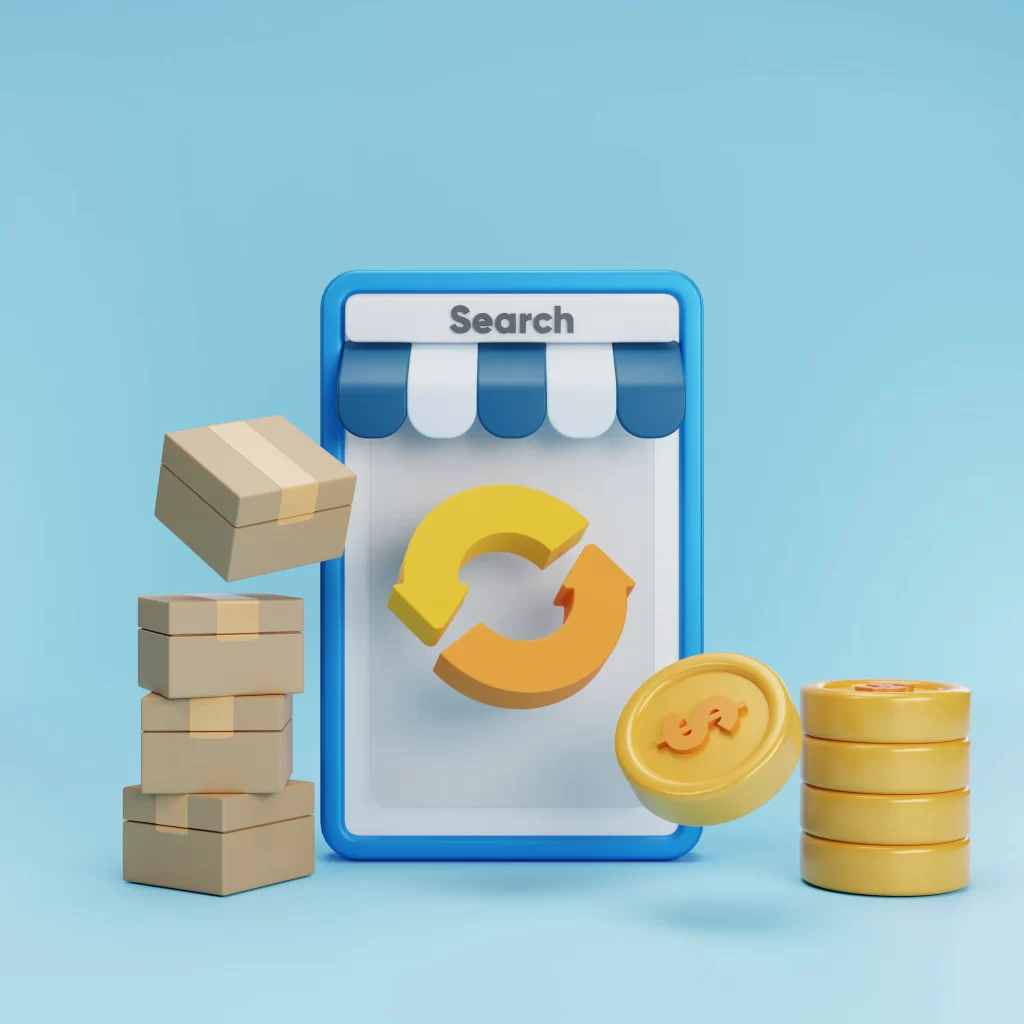
This model, known as retail or online arbitrage, involves buying products at a lower price and selling them on Amazon for a higher price, profiting from the difference.
Let’s say you’re browsing your local Walmart and come across a popular toy that is normally priced at $50, but is currently on clearance for $20. You purchase several units of the toy and list these toys for sale on Amazon, pricing them at $40 each. As customers browse Amazon, they see your listing and are willing to pay the $40 price, as it is still lower than the toy’s regular retail price of $50. When a customer purchases the toy from your Amazon listing, you earn a $20 profit per unit. That is an example of reselling.
Reselling can be a good way to start your Amazon business, as it has a low barrier to entry and requires minimal upfront investment. However, it’s disadvantages include the time-consuming nature of finding deals, potentially slim profit margins, and the need for constant sourcing of new products.
There are two kinds of reselling:
- Retail arbitrage. You buy discounted products from retail stores and resell them on Amazon. Popular places to source items for retail arbitrage are Walmart, Target, Home Depot, Lowe’s, Marshall’s, and Ross.
- Online arbitrage: You buy discounted products from online stores or websites and resell them on Amazon. Popular item sources for online arbitrage are eBay, Overstock, Groupon, Rakuten, Jet, and Craigslist.
Private labeling
In this model, a retailer partners with a manufacturer to produce products under the retailer’s brand. The retailer then sells them to consumers under their own brand names. You should choose this model if you have a unique product idea and a willingness to invest time and money in brand building.
Of all the business models, this model provides the highest profit margins, as you are the one who controls your pricing. However, it also comes with a larger upfront investment. Some places to find manufacturers in this model are Thomasnet or Alibaba.
Dropshipping
Dropshipping is a selling method where sellers outsource order fulfillment without holding inventory. When a customer places an order, the seller purchases the item from a third-party supplier who ships it directly to the customer.
This model is suitable for beginners with limited capital or those who want to test product ideas without holding inventory. Dropshipping requires minimal upfront investment, as there is no need to handle inventory or shipping, making it easy to get started. However, it typically offers lower profit margins, less control over shipping and customer service, and faces high competition.
You can find dropshipping suppliers through dropship supplier directories like Inventory Source and Wholesale Central or, you can can use dropship apps like Spocket or Oberlo. B2B platforms such as Alibaba.com and AliExpress are good place to start, too.
Wholesale
You buy products in bulk from established brands and resell them on Amazon. This model is suitable for sellers who prefer established brands and have a network of wholesale suppliers. This model offers lower risk than private label as you’re selling established products, less upfront investment, easier to get started.
You can use online directories like Thomasnet and Manufacturer.com or established online marketplaces like Alibaba or DHgate to find manufacturers and wholesalers across various industries.
While this guide outlines essential steps for selling on Amazon, it’s crucial to consider the legal implications of your venture. To determine if forming an LLC is right for your Amazon business, check out our in-depth article on “Do I Need an LLC to Sell on Amazon?“
Handmade
If you love creating unique, handmade items, you can consider selling your handcrafts on Amazon Handmade. This category is generally less competition than in other Amazon categories due to the handmade requirement.
#Step 2: Choose What to Sell on Amazon
Next, you need to source products to sell on Amazon, ideally those with good profit margin and low competition. There are few ways you can try to source potential products on this competitive marketplace.
Use Amazon analytical softwares
You can use tools like AMZScout, Junglescout or Helium10 to analyze products directly on the Amazon page. These tools provide searchable databases equipped with filters that help you identify best products to sell on Amazon. You can narrow down your search by category, estimated sales volume, competition level, and other relevant criteria.
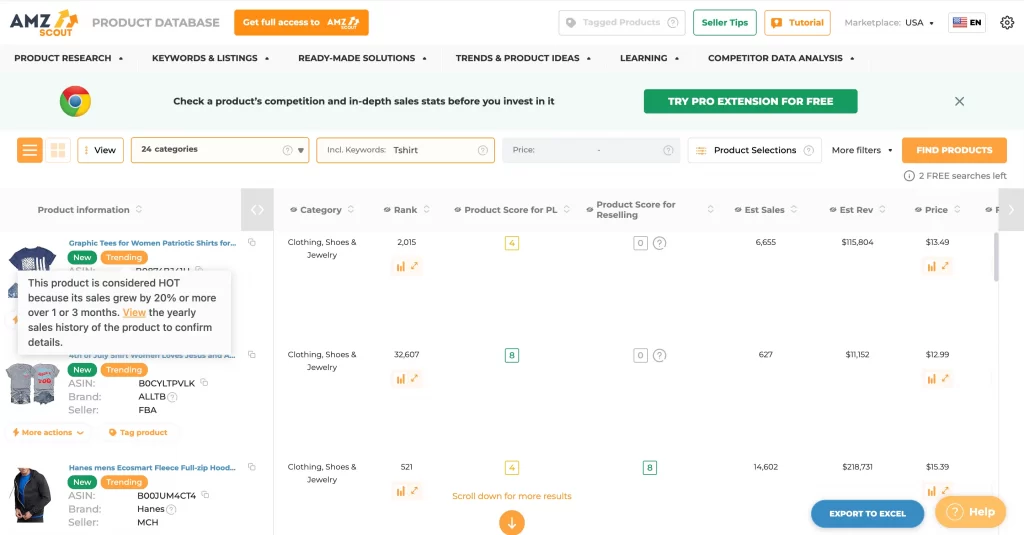
Check out Amazon product opportunity explorer
Amazon Product Opportunity Explorer is a powerful tool that helps sellers on the Amazon marketplace identify new product opportunities and generate ideas for products to sell.
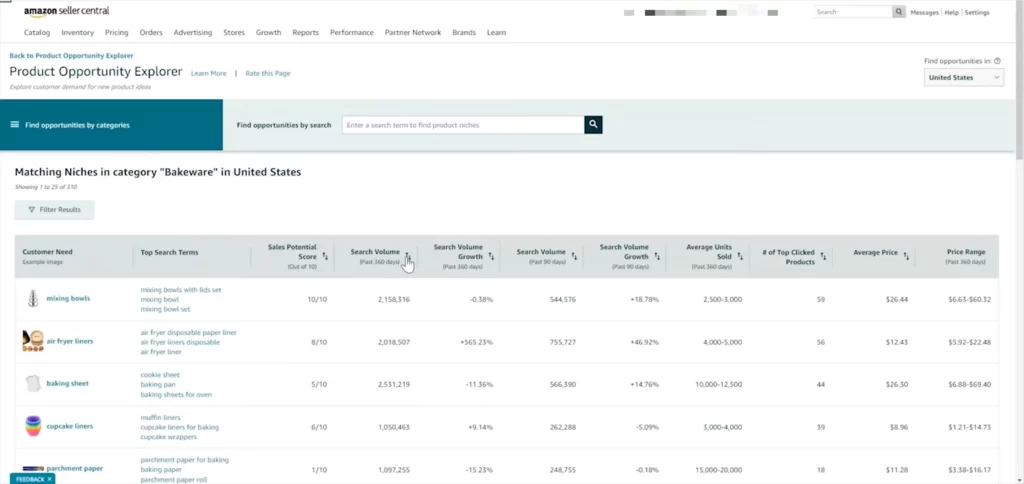
It provides data-driven insights into customer search behavior, demand trends, and existing product offerings across Amazon. It allows you to analyze what customers are searching for and purchasing, revealing potential gaps or unmet market demands.
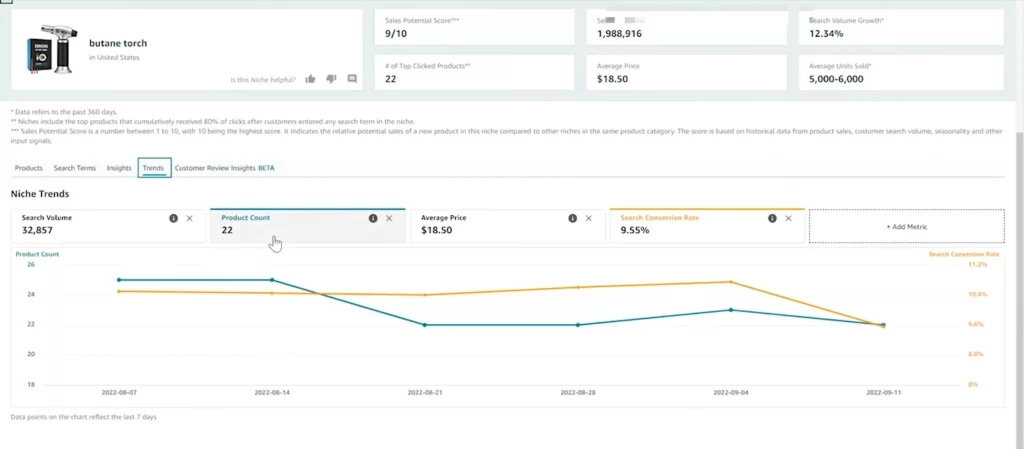
The tool organizes products into “niches” – collections of search terms and products representing specific customer needs. You can browse or search for relevant niches aligned with your business. For each niche, the tool provides key information like top search terms, existing products, search volume, pricing data, and new product launch potential statistics. This data helps evaluate opportunities and competition.
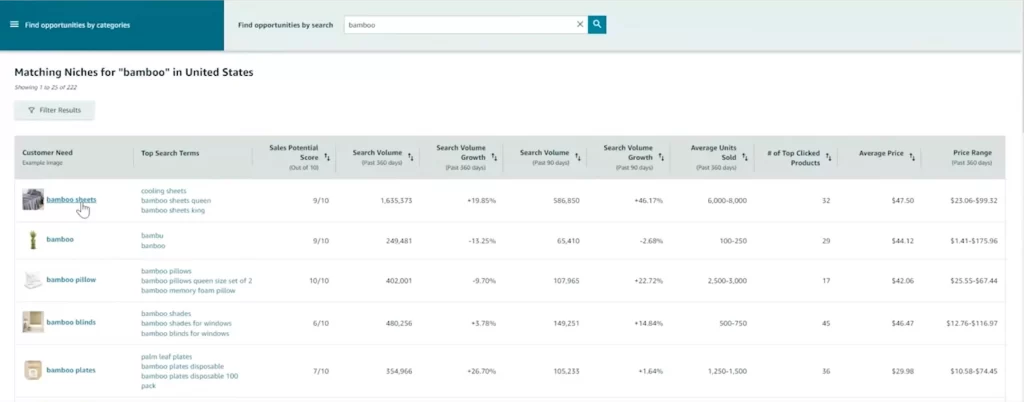
If you have a Professional Selling Plan, you can access this tool through their Amazon Seller Central account. The tool is regularly updated with the latest data to provide current and accurate insights.
Conduct competitive analysis
First, start by searching for your product on Amazon and note the top-ranking listings that come up. These are your main competitors. Analyze your Amazon competitor should be your first move to start selling on Amazon.
Next, use tools like Jungle Scout’s Product Tracker to track and monitor competitor ASINs in one place easily.
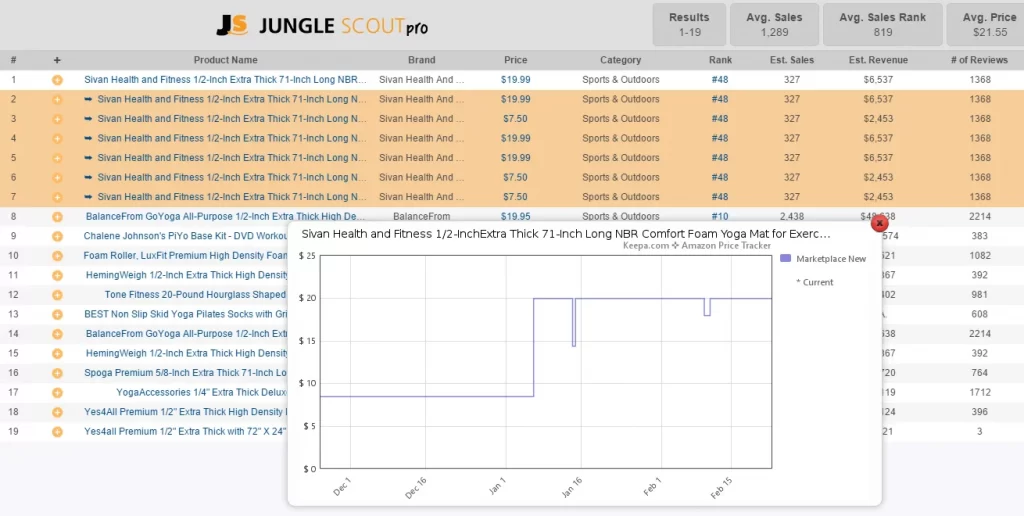
Audit competitor product listings for strengths and weaknesses in titles, descriptions, images, pricing, reviews, etc. Look for opportunities to differentiate and improve your own listing. Use keyword research tools like Keyword Scout to identify the top keywords your competitors are ranking for organically and in ads.
You can also track competitor pricing over time using tools like Dealavo, Seller App or Helium10.
Another way you can try is to read through competitor product reviews to understand customer pain points and Identify ways to address any weaknesses or gaps in your own product.
Start with your hobbies or interests
Consider products that align with your hobbies or interests. This can make the selling process more enjoyable and increase your chances of success.
Let’s say you’re an avid gardener with a deep passion for growing and caring for houseplants. You’ve accumulated a wealth of knowledge over the years about the best soil mixes, fertilizers, and tools for maintaining healthy indoor plants.
Recognizing this expertise, you decide to start an Amazon business selling premium potting soil and gardening accessories tailored for houseplant enthusiasts. You source high-quality, organic soil mixes from a local supplier at wholesale prices and curate a selection of specialty gardening tools and plant care products.
When listing these items on Amazon, you’re able to draw upon your personal experiences to create detailed, informative product descriptions. You can include tips on soil preparation, watering schedules, and common houseplant issues – providing immense value to your target customers.
Evaluate product criteria
Use criteria like high demand, low competition, and high-profit margins to evaluate potential products. Here are some tips for you:
- Look for products that generate at least 300 sales per month or 10 sales per day. This indicates high demand.
- Analyze sales trends to identify products with consistent, year-round sales rather than just seasonal spikes.
- Aim for products with a search volume between 400-4,000 per month. You’ll want to avoid extremely high-volume keywords (over 4,000 per month) as they tend to be highly competitive.
- Target products where the top sellers have fewer than 400 reviews. This suggests lower competition.
- Aim for products priced between $30-$70. This sweet spot balances affordability and profitability.
- For most products, your selling price should be at least 3-5x your buying costs. For lower-priced items, aim for the higher end around 5x. Gross profit margins for private label products are typically in the 25-75% range, with 50-60% being common.
- For a first product, a 22.8% net margin is a good start, but growing a profitable Amazon business requires volume and expanding your product catalog over time.
#Step 3: Start selling on Amazon
Total cost of selling on Amazon
Amazon charges seller fees to list and sell products. Specifically, there are two pricing plans named Individual and Professional, as follows:
- Individual plan: $0.99/ product sold + additional selling fees.
- Professional plan: $39.99/ month + additional selling fees.
- Category referral commission: 8 – 20% of the total sale price.
- Fulfillment by Amazon fee: This depends on product size, weight, dimensions, and product category.
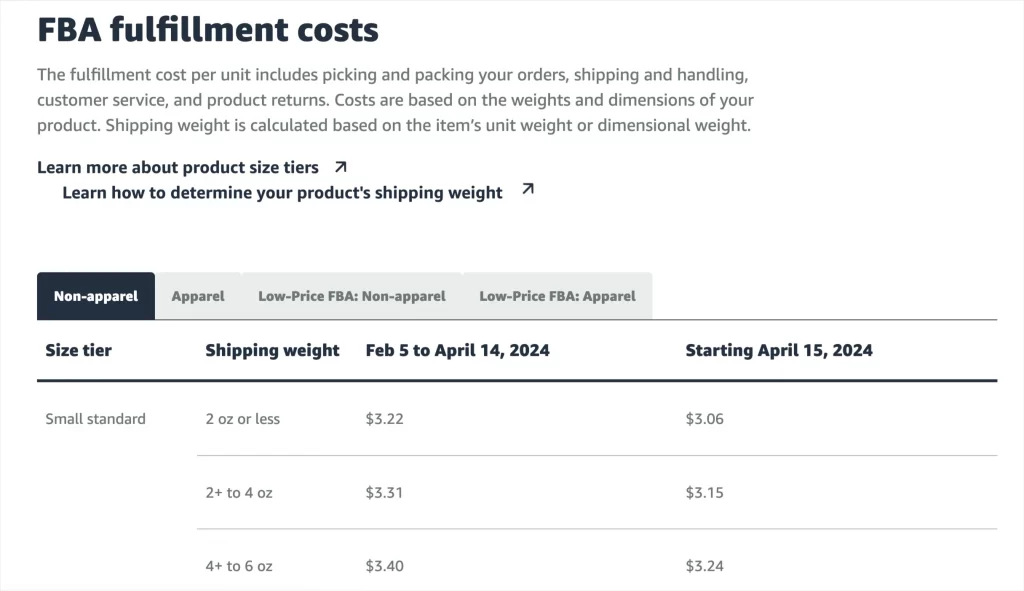
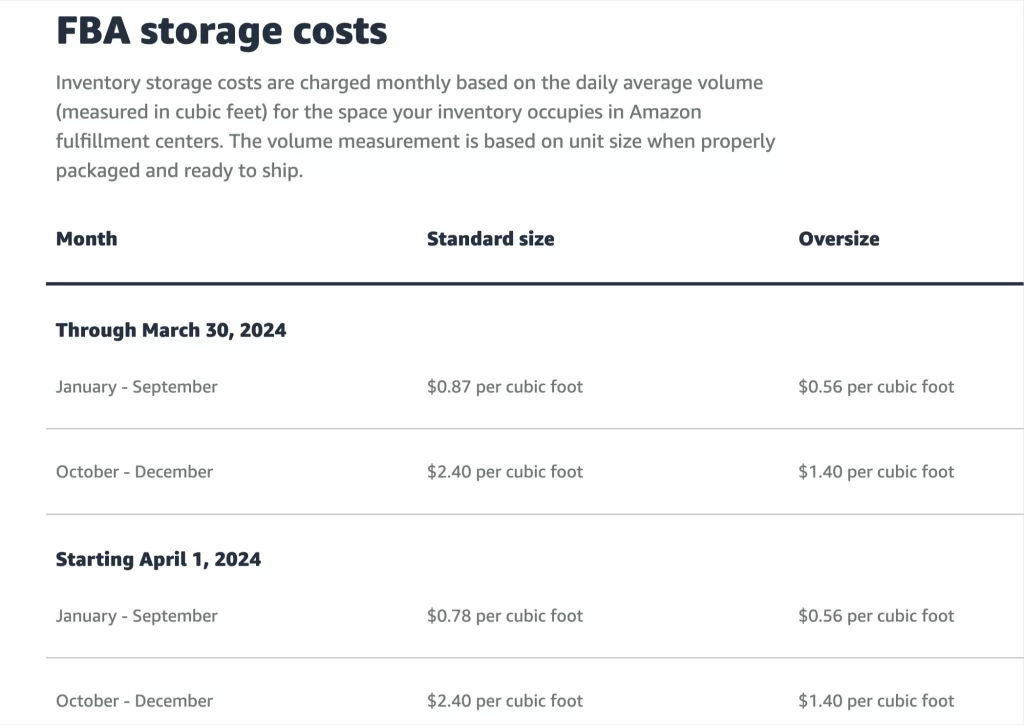
Create an Amazon seller account
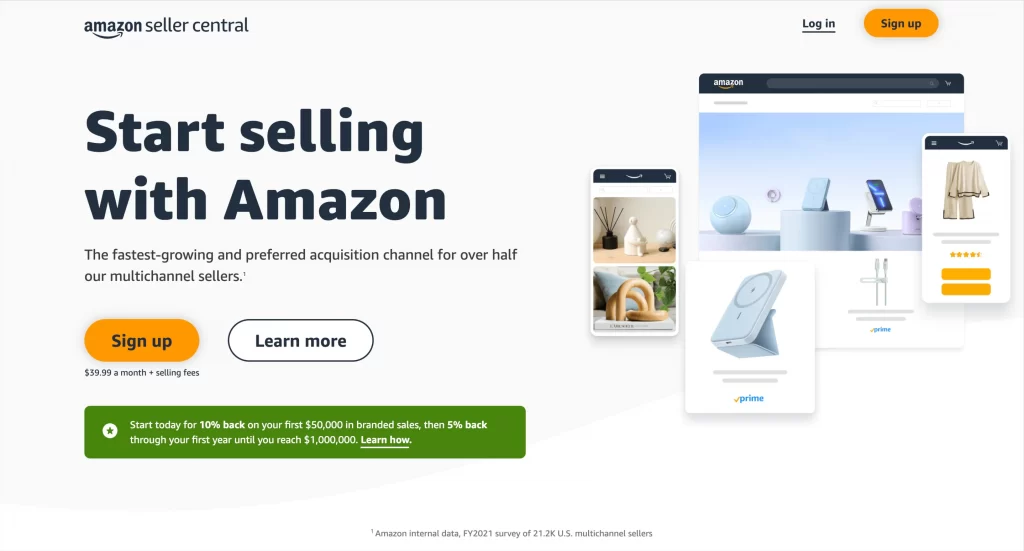
To create an Amazon Seller Account, prepare the following in advance:
- Bank account information;
- Chargeable credit card;
- Government-issued ID;
- Tax information;
- Phone number and email address.
After that:
Go to Amazon Seller Central and click Sign up. If you already have a Seller account, log into your account and skip this step.
Fill in the required information following Amazon’s direction.
Notes: According to the rulebook, Amazon generates numerous requirements and restrictions on products, listings, overselling activities, and more to protect its community. Therefore, when you start selling on Amazon, you should check out Amazon seller policies in advance.
Get to know Amazon Seller Central
Seller central tools
1. Product Listing Tools
- List new products one at a time or in bulk via file upload.
- View and edit existing product listings and offers.
- Get data-driven insights on customer demands to identify new product opportunities.

2. Pricing and Promotions
- Set custom automated pricing rules.
- Create discounts and promotions.
- Purchase shipping for your FBM orders.
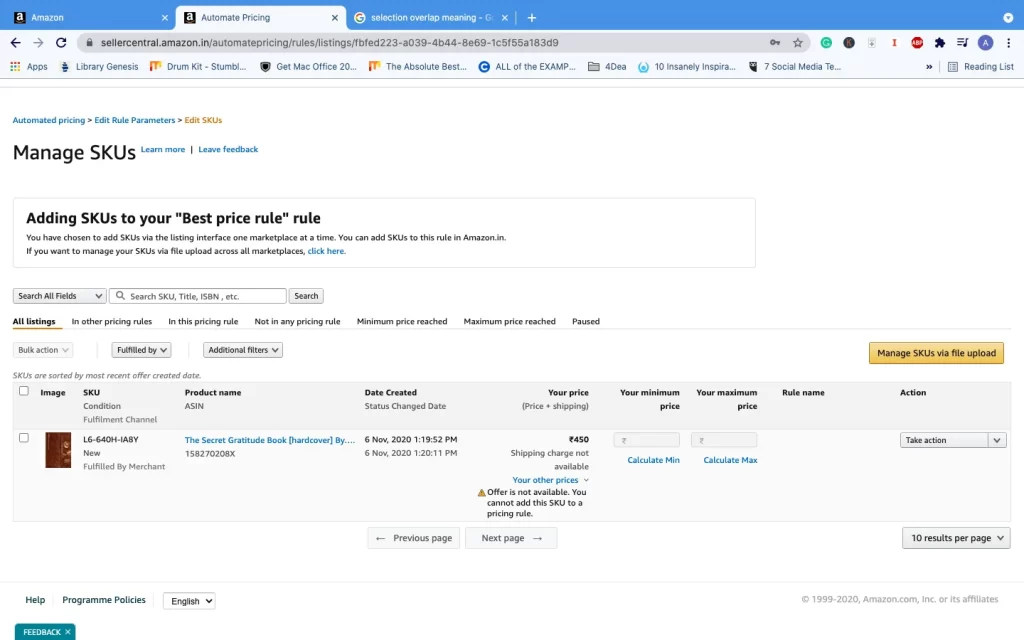
3. Order Management
- View and process orders you fulfill yourself (FBM).
- Handle customer return requests.
- Track inbound FBA shipments.
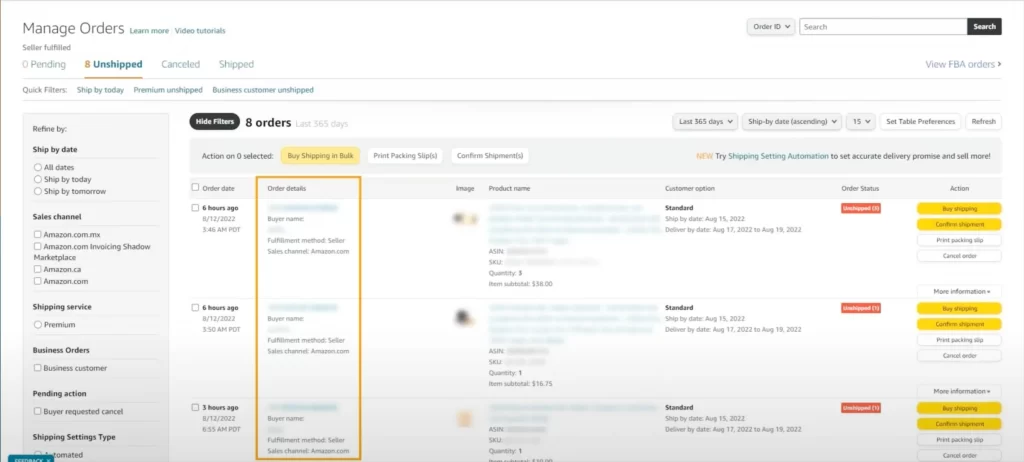
4. Advertising and Marketing
- Manage your Amazon advertising campaigns.
- Create enhanced brand and product descriptions.

5. Performance Metrics
- Access reports on sales, traffic, payments, returns, etc.
- Metrics for registered brands on search terms, market basket analysis, etc.
- Monitor your account performance metrics.
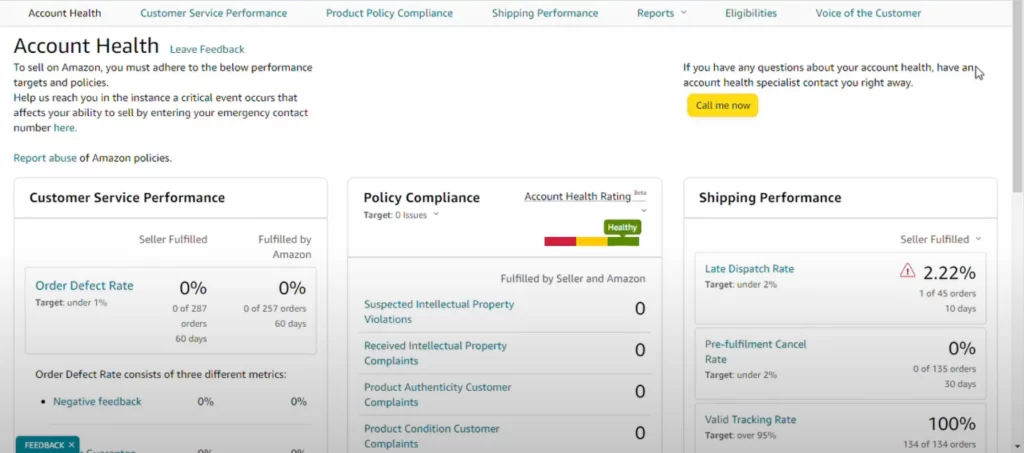
6. Customer Engagement
- View and respond to product reviews and ratings.
- Track customer service metrics like response times.
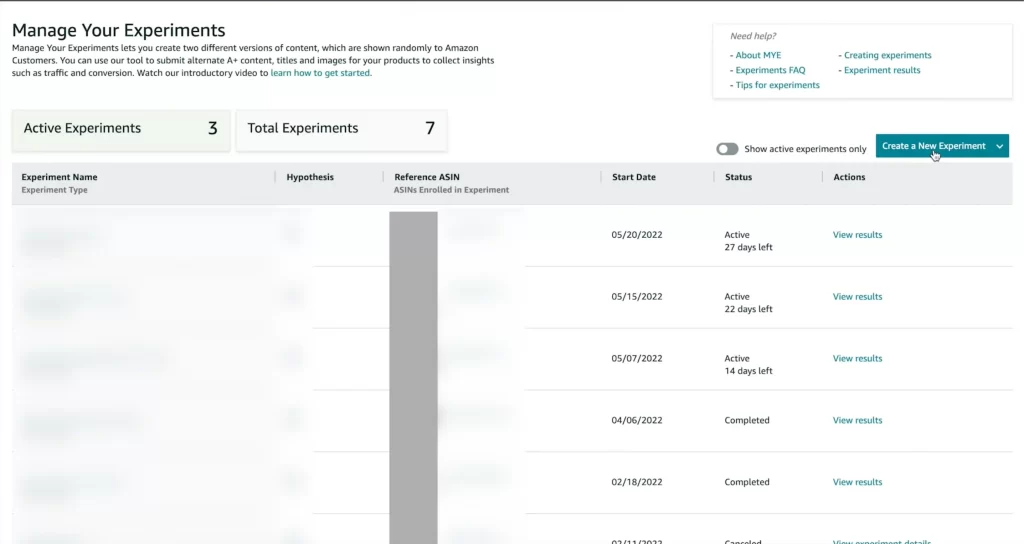
Amazon product page
A product page is where customers view every detail of your Amazon product. Customers can find all the needed information about a particular item on this page.
Accordingly, to bring the best shopping experience while learning how to sell products on Amazon, you should focus on accuracy, relevance, and listing optimization. Speaking of which, here might be some useful points about an Amazon product detail page:
- Title: No more than 200 characters and capitalized letters for every word. Example: Instant Pot Duo 7-in-1 Electric Pressure Cooker, 6 Quart, Stainless Steel/Black.
- Images: 500×500 or 1,000×1,000 pixels to increase listing quality.
- Variations: Such as different colors, scents, or sizes.
- Bullet points: Short, descriptive sentences highlighting key features and benefits.
- Featured offer (“Buy Box”): The featured offer is on a detail page. Customers can add to their cart or “Buy Now”.
- Other offers: The same product sold by multiple sellers offering a different price, shipping options, etc.
- Description: Keywords help people find your listing while you sell stuff on Amazon. For example, you sell a “bamboo cutting board.” If a customer searches for “eco-friendly kitchen accessories” or “sustainable cutting boards,” your product could appear in the search results if you’ve included those keywords in your listing.
In addition to your product details, you will need to learn how to create an Amazon storefront, which will help enhance your brand recognition on Amazon.
Knowing your product page well is a vital step in how to sell a product on Amazon for beginners. Therefore, make sure you always get the latest updates from Amazon and optimize your page accordingly.
#Step 4. List your products to sell on Amazon
Being an Amazon seller means creating a product listing and optimizing it afterward. For the time being, let’s focus on how to list products on Amazon. Without further ado, here comes our Amazon listing tutorial for newbies.
Prepare to list
Just like your registration process, you must prepare some information before listing items on Amazon. The required information includes a product ID. Remember that every product you sell on Amazon must have a GTIN (Global Trade Item Number). Your product’s GTIN can be a UPC, an EAN, or an ISBN (for books).
Please note that
Besides a product ID, you should get the following details in hand as you learn how to sell on Amazon:
- A SKU (Stock-keeping unit).
- Your product title.
- Product descriptions, variants, and highlights.
- Product images.
- Item search terms and relevant keywords.
Start to list products on Amazon
To list products on Amazon step by step, follow these steps:
- Go to Amazon Seller Central;
- Look for the Inventory section and click Add a product.
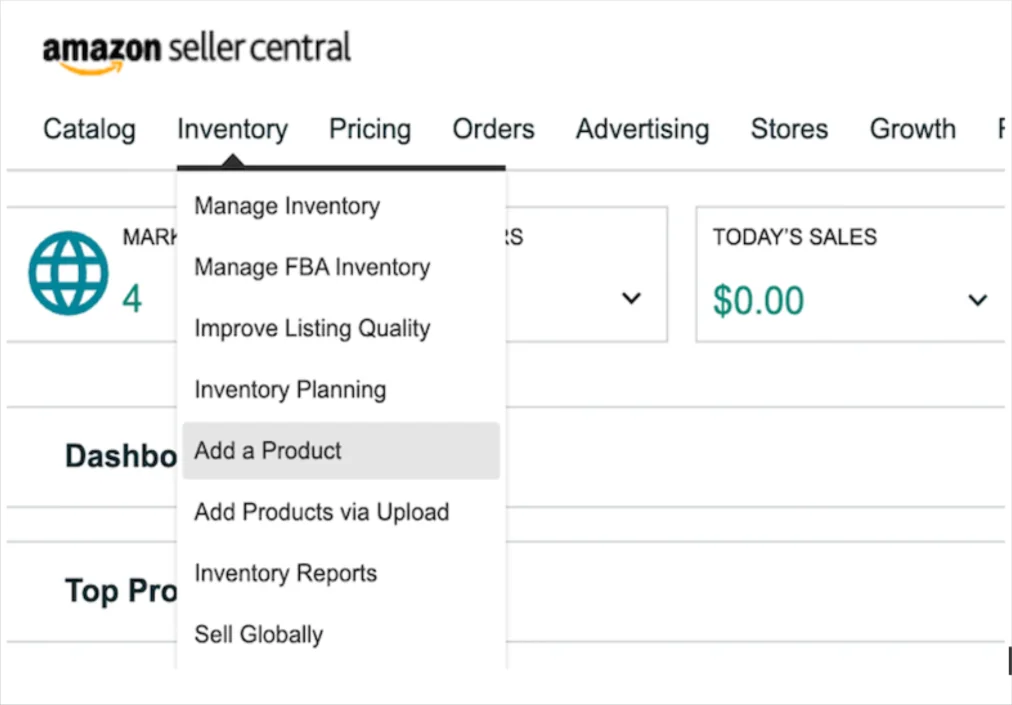
- Amazon will direct you to an interface where you can create a listing that matches an existing product, add a brand-new product, or list in bulk (for the Professional plan only).
- Hit on any option you want to list your product for selling on Amazon.
- Now, it’s time to categorize your items. Simply use the search bar to look for your product categories or browse the Amazon list. Note that you can refer to competitors’ categories. Also, your product can have more than one category.
- Fill in product details, including titles, descriptions, images, variants, and relevant information. In this step, we highly recommend you use Amazon Enhanced Brand Content to optimize your listing. As a matter of fact, optimizing your listings will likely help you increase sales on Amazon later on.
List on Amazon with LitCommerce
List on Amazon easily with LitCommerce, using our powerful listing tool, multi-edit mode, listing templates, recipes, and SEO support!
More about Amazon product detail page
A product page is where customers view every detail of your Amazon product. Customers can find all the needed information about a particular item on this page.
Accordingly, to bring the best shopping experience while learning how to sell products on Amazon, you should focus on accuracy, relevance, and listing optimization. Speaking of which, here might be some useful points about an Amazon product detail page:
- Title: No more than 200 characters and capitalized letter of every word.
- Images: 500×500 or 1,000×1,000 pixels to increase listing quality.
- Variations: Such as different colors, scents, or sizes.
- Bullet points: Short, descriptive sentences highlighting key features and benefits.
- Featured offer (“Buy Box”): The featured offer is on a detail page. Customers can add to their cart or “Buy Now”.
- Other offers: The same product sold by multiple sellers offering a different price, shipping options, etc.
- Description: Keywords help people find your listing while you sell on Amazon.
In addition to your product details, you will need to learn how to create an Amazon storefront, which will help enhance your brand recognition on Amazon.
Notes: Knowing your product page well is a vital step in how to sell a product on Amazon. Therefore, make sure you always get the latest updates from Amazon and optimize your page accordingly.
#Stage 5. Set up your fulfillment while selling on Amazon
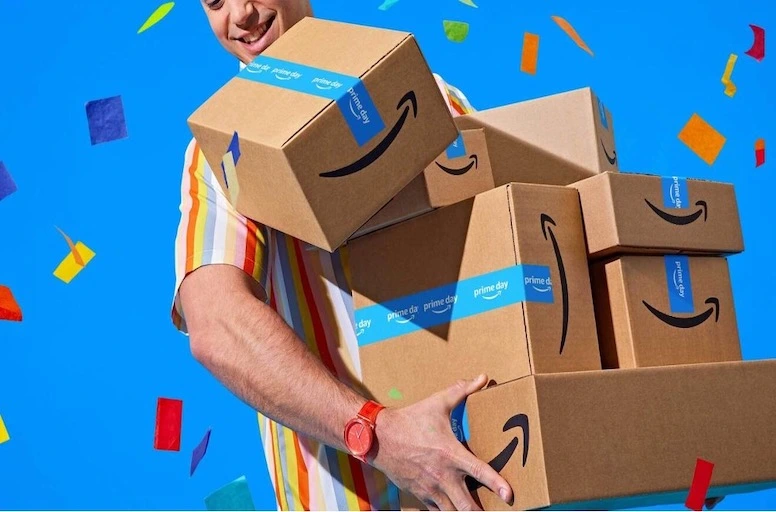
Our guide to selling stuff on Amazon cannot be complete without instructions for setting up fulfillment. Simply put, setting up fulfillment refers to how you will fulfill and ship products to the end-users, and all maneuverings are made through Amazon Seller Central.
Here is how you set up your order fulfillment and start selling on Amazon step by step:
- Go to Amazon Seller Central.
- Navigate to Settings and choose Shipping Settings.
- Set up your shipping rates, policies, and regions. In addition, you can set up shipping overrides and international terms as you sell on Amazon.
- If you look to print shipping labels, you can print them individually or in bulk in the Shipping Settings section.
- As you’ve done with shipping settings, simply click Save.
As you become a seller on Amazon, you’ll get to choose between FBA (Fulfillment by Amazon) and FBM (Fulfillment by Merchant). When it comes to FBA and FBM, here comes their most significant difference.
Fulfillment by Amazon
Fulfillment by Amazon (FBA) is a service offered by Amazon that allows third-party sellers to outsource their order fulfillment operations to Amazon.
To use this service, you need to send your products to Amazon’s fulfillment centers. Amazon then stores your products, picks, packs, ships, and provides customer service for those products. You will pay Amazon FBA fees for this service.
Benefits of this service include access to Amazon’s logistics network and fast shipping options like Prime. And you can focus on other aspects of their business, especially marketing and sales.
The mechanism of FBA is simple, and here is how it goes:
- Step 1: You set up shipping and choose FBA as your fulfillment method.
- Step 2: You create a product listing to sell on Amazon.
- Step 3: Prepare your products and pack them following Amazon’s guidelines.
- Step 4: Ship your products to the Amazon fulfillment center, and FBA handles the rest.
Learning how to start an Amazon FBA business can be useful for sellers in general. The case will be the most relevant if you are looking for guides on how to sell on Amazon without inventory.
Fulfillment by Merchant
In this fulfillment option, you are responsible for all logistics and fulfillment tasks. Since you handle shipping, you won’t have to pay Amazon FBA fees, only the referral fee on each sale. This option gives you more control over shipping and the customer experience, along with the ability to fulfill products restricted from FBA, such as heavy, oversized, or regulated items.
Check our guide on Amazon FBM: A Step-by-Step Guide For Seller
For newbies learning how to sell on Amazon, I highly recommend choosing FBA to reduce your initial workload. Besides, FBA can be useful if you are looking for cost efficiency. This is even more applicable when your business on Amazon is more of a hobby shop, or most of your item sizes are determined by Amazon to be compact.
Besides our guide to selling on Amazon, we have also provided you with relevant information about Amazon Seller Central, FBA, and Amazon Seller standards through 5 stages. Make sure you follow these steps and always update with the house rules. Happy selling!
How to Sell on Amazon Successfully? 9 Most Practical Tips
Everyone knows that starting a successful Amazon store is challenging. Here are 9 effective tips to help you compete and thrive as an Amazon seller.
#1. Optimize your listings
One of the best tips for selling on Amazon is listing optimization. Regarding this matter, here is how to optimize your listing title:
- Identify relevant keywords that customers use to search for your product. Use tools like Helium 10’s Magnet or Jungle Scout’s Keyword Scout to find high-volume, relevant keywords.
- Strategically place these keywords in your product title, bullet points, description, and backend search terms to improve your ranking for those terms.
- Don’t overstuff keywords – use them naturally and focus on buyer intent.
- Follow Amazon’s recommended title structure: Brand + Product Name + Model/Size Details + Style/Color + Pack Count.
- Incorporate 1-2 highly relevant keywords in the title. Keep it concise but descriptive, under 200 characters.
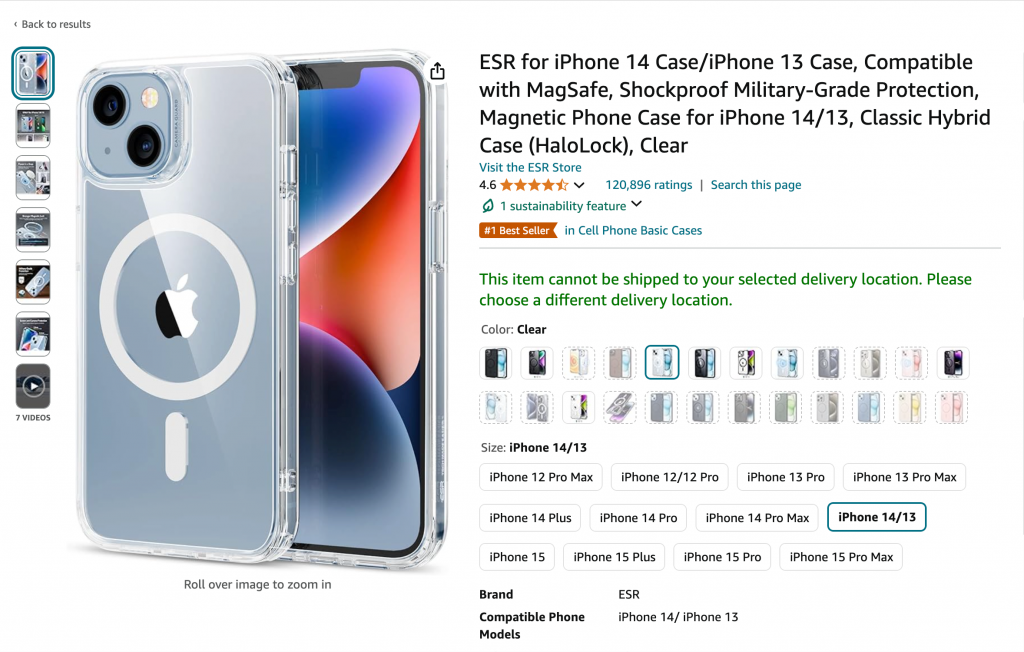
Next, you need to optimize your listing image:
- Use high-quality, professional-looking images that show the product from multiple angles.
- The main image should have a white background and show the product only.
- Additional images can show product details, lifestyle shots, packaging, etc.
- Optimize alt-text with relevant keywords for image search.
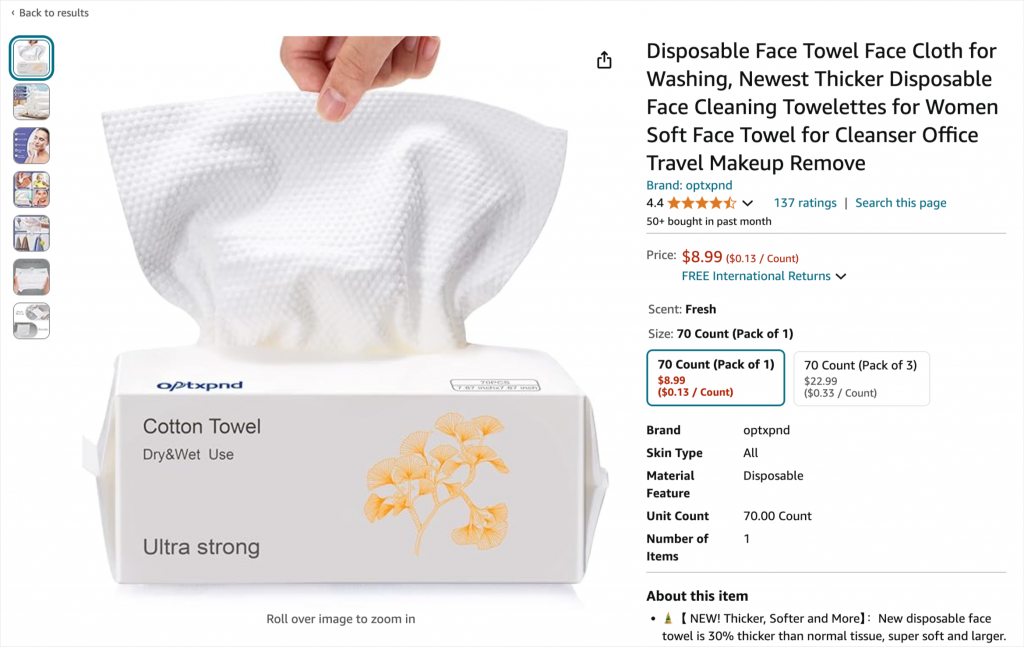
#2. Integrate Amazon with more channels
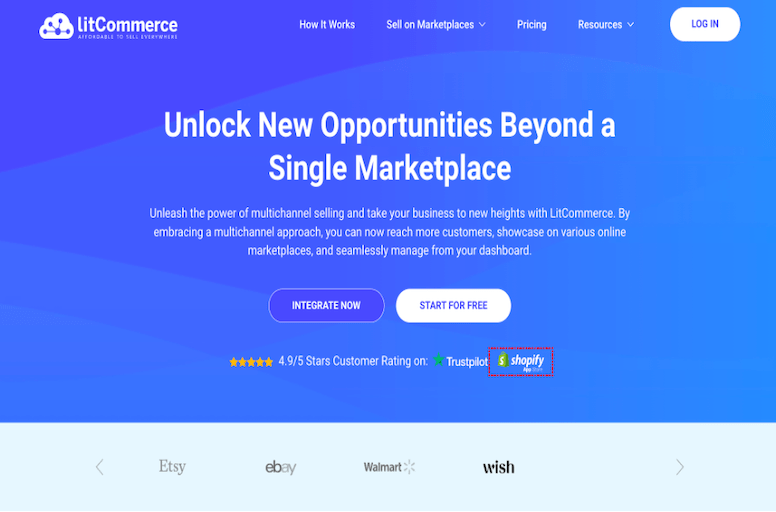
Apart from learning how to sell on Amazon, have you ever considered expanding your business? Selling on multiple channels beyond Amazon, such as on your own website or other marketplaces like eBay or Walmart, presents opportunities to diversify your revenue streams and reach new audiences. However, multichannel selling can be challenging without an advanced management tool like LitCommerce. By using LitCommerce, Amazon sellers can smoothly integrate into 22+ dynamic platforms in just ONE click and manage all from ONE central dashboard.
Tap into The Multi-selling Power with LitCommerce
Integrate Amazon with more channels like eBay, Etsy, and TikTok Shop in ONE click using LitCommerce – your powerful multichannel selling solution.
#3. Get customer reviews
Customer reviews can make or break your business. In fact, they are one of the keys to successfully selling something on Amazon because potential shoppers will always look for reviews! Accordingly, you must ensure you get the best products to shoppers first. Then, you should gather as much positive feedback as possible. But how? One of the most effective ways to get customer reviews on Amazon is to ask for them. After a customer has received their purchase, follow up with an email thanking them for their purchase and kindly asking them to leave a review. Make it easy for them by including a direct link to the product review page.
Beyond that, some tips you can use from our guide on how to sell on Amazon to get reviews effectively are:
- Offering incentives for leaving a review.
- Using Amazon’s Early Reviewer program.
- Optimizing your after-sale customer experience.
- Utilizing Amazon’s “Request a review” button.
Last, but not least, be aware of Amazon’s policies regarding incentivized reviews and make sure to follow them to avoid any penalties.
#4. Monitor business performance and metrics
For the record, Amazon maintains a high standard to provide sellers with a seamless and enjoyable eCommerce experience. Not to mention, the marketplace is highly customer-oriented.
On these grounds, learning how to sell things on Amazon also means you’re well aware of Amazon seller KPIs and rules. Now, let’s take a glance at 3 critical KPIs as you become an Amazon seller!
Customer service performance
When you sell stuff on Amazon, your customer service performance is measured based on your Order Defect Rate (ODR). According to the house rule, ODR is the percentage of your orders getting one or more indicators of poor customer service.
Such indicators can be negative feedback from your shoppers or their requests for credit card chargeback. To avoid poor customer service performance, any seller on Amazon is recommended to keep their ODR under 1%.
Account health rating
Learning how to sell on Amazon and make money from it means you’d better keep a healthy account rating. As you start selling with Amazon, you’ll get an overview of their compliance with key policies and restrictions in all aspects.
In this stage, Amazon expects sellers, including you, to maintain a “Good” account rating and address any rule violations listed on your Account Health Dashboard. Otherwise, if your Amazon account is rated as At Risk or Critical, it may be deactivated as soon as Amazon detects any violations.
Shipping performance
The 3rd metric – Shipping performance comes into the scene if you sell stuff on Amazon using FBM (Fulfillment by Merchants).
- Pre-fulfillment cancel rate (initiated by the seller before shipment): < 2.5%
- Late shipment rate (orders that ship after the expected date): < 4%
- Valid tracking rate (orders fulfilled by merchants with valid tracking numbers): >95%
#5. Make use of Amazon seller tools
Why not leverage the power of sellers by providing useful tools when you learn how to sell on Amazon? Don’t skip any chance that helps you level up your store! Some highlights of Amazon seller tools you may want to know:
- Amazon Seller Central: Helps you manage every aspect of your business on Amazon, from listings to taxation.
- Fulfillment by Amazon: Allows you to store products in Amazon fulfillment centers and then handles all fulfillment tasks.
- Amazon Advertising: Offers Amazon sellers a suite of services and tools such as Sponsored Products, to promote their items on Amazon.
- Amazon A+ Content: Lets Amazon brand owners and select sellers jazz up their product pages with better visuals and more information to attract customers.
- Amazon Brand Registry: Helps you grow and protect your brand on Amazon, especially if you are coming up against counterfeit products.
- Amazon Early Reviewer Program: Encourages customers to leave reviews, which is extremely helpful when you start selling on Amazon and want to generate initial reviews.
#6. Sell with Amazon and leverage FBA services
As mentioned above, we highly recommend you leverage the Fulfillment by Amazon method, and here are several reasons behind it:
- Your shipping performance is less at risk: Since everything is on the house, you won’t have to worry about your shipping performance and any related metrics. For those who use FBM, this is a huge advantage.
- You are more likely to be eligible for Amazon Prime: Because your shipping performance is on top using FBA, there is a high chance you are considered ideal for Prime shipping benefits.
- Winning the Buy Box gets easier: Sellers who use FBA are more likely to win the Buy Box compared to those who don’t. Once again, Amazon takes into account your shipping performance and order fulfillment rate. That’s why we advise any seller to use the FBA service.
#7. Leverage advertisement
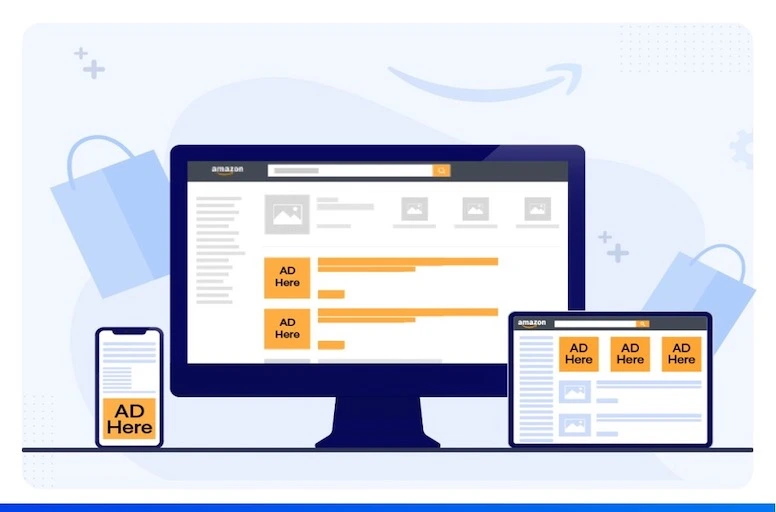
It is evident that advertisement holds great power for any online business, including yours on Amazon. When selling on Amazon, you can access 4 types of ad solutions, which are:
- Sponsored Products: This Amazon ad is for individual products and is shown on product detail pages and search result pages;
- Sponsored Brands: You can display your company’s logo and product line, holding up to 3 products.
- Amazon Stores: Individual brands can create custom multi-page shopping destinations to convey their company story and product selections.
- Custom Amazon ads: These are tailored ads to your business needs, and they are created by Amazon Ads account executives.
For individual sellers or small businesses who start selling on Amazon, Sponsored Products advertising is quite ideal.
As you figure out how to sell on Amazon and promote your products, pay attention to some ad mistakes below:
- Uncategorized campaigns;
- Poor keyword selection;
- Constantly changed ad budgets.
#8. Win the Amazon Buy Box
Winning the Amazon Buy Box can answer your question about how to make money on Amazon. In summary, to achieve this box, you should put effort into:
- Optimize listings;
- Enhance performance metrics;
- Conduct effective Amazon pricing strategies;
- Level up the customer experience.
As a tip we have told you, try leveraging the FBA method. Don’t skip a chance to build up your store on Amazon.
Any more ideas or practices you’ve tried to win the Buy Box? We’d love to hear from you!
#9. Access Amazon learning resources
You are figuring out how to sell on Amazon, and the house has offered you every learning source to get started. Ever wonder what they are? If yes, take a look at all the resources you can access for free when selling with Amazon here!
- Seller University: You learn everything from scratch to the most advanced selling strategies on Amazon. This is pretty much like an Amazon selling 101 course. You can also check out the best Amazon FBA courses to gain more insight about how to succeed on Amazon.
- Seller Forums: The name has already spoken for itself. Amazon Seller Forums is a place for sellers like you to ask questions and provide answers.
- Advertising Learning Console: As a learning hub on Amazon, Advertising Console helps you understand and optimize your advertising efforts on the platform.
- Podcasts and Blogs: If you are a new seller, you might learn more about Amazon success stories, tried-and-true practices from experienced sellers, and industry insights.
- Ecommerce Inventory and Fulfillment Guide: Amazon explains all the details about inventory management and fulfillment in these guides. Without a doubt, such instructions will help you a lot when it comes to our case – How to sell on Amazon.
How Do I Become An Amazon Seller – FAQs
Yes, it is profitable to sell on Amazon. The rationale behind this is that Amazon has a massive customer base of over 310 million. Not to mention, Amazon’s monthly visits have reached up to 2.6 billion. Surely, these figures indicate huge selling opportunities on Amazon. Alongside, you might consider learning how to sell on Amazon because of its robust selling tools and product diversity that help enhance your store’s capabilities in the marketplace. Here are 5 simple steps of how to sell on Amazon: On the first hand, you have to pay for a seller plan (Individual or Professional), which ranges from $0.99 per unit sold to $39.99 monthly. Besides, you might be subject to paying for category referral commissions, FBA charges, and advertising. You still need some initial investment to start Amazon FBA. However, minimizing the costs to start an Amazon FBA business is 100% possible. Consider selling products with low market entries, optimizing your packaging, and leveraging free Amazon selling tools along the way. You can sell almost anything from new to used on Amazon. However, Amazon still has strict rules on what you cannot sell. Please consult more about Amazon restricted product policies. On the other hand, some of the best selling items on Amazon include apparel, toys and games, baby supplies, pet supplies, bedding items, and household appliances. As an Amazon seller, you do not have to pay extra for shipping. Additionally, the cost to ship your orders depends on whether you fulfill your own orders or use Fulfillment by Amazon (FBA). In general, shipping fees are based on the weights and dimensions of your product. To cover this, you can charge buyers, but make sure you inform them clearly. Yes, you can resell on Amazon if you do not manufacture your own products. As an Amazon reseller, you must follow the marketplace guidelines, which are the Amazon category, to not list banned items. If you still wonder what should I sell on Amazon, you can check the list of best products to sell on Amazon to find a chance to generate great profit on this marketplace. There are up to five ways you can sell on Amazon without inventory. They are: Amazon Global Selling is a program that allows third-party sellers to list and sell their products on Amazon’s international marketplaces across the world. Here are the key details about Amazon Global Selling: It provides access to hundreds of millions of customers shopping on Amazon’s 21 global marketplaces across North America, Europe, Asia-Pacific, Middle East, and other regions. Sellers can use their existing seller account to list products on multiple Amazon sites like Amazon.com, Amazon.ca, Amazon.co.uk, Amazon.de, Amazon.fr, Amazon.it, Amazon.es, Amazon.jp, Amazon.com.au etc. Amazon handles logistics like shipping, customer service, and returns for orders through its Fulfillment by Amazon (FBA) program across these marketplaces.
Start Selling on Amazon – The Bottom Line
I hope that our guide has answered your question “How do I sell on Amazon”. There are briefly 5 steps to start selling on Amazon.
Don’t forget to follow our tried-and-true practices for thriving a business. Especially if you are looking to conquer this global marketplace and expand, we’d like to show the utmost multichannel selling tool – LitCommerce.
By using LitCommerce, you can sell as many sale channels as you want, and we’ll lift all the hard work. Should you be interested, don’t hesitate to contact our 24/7 support team.
Finally, don’t forget to follow the LitCommerce Retailer Blog to stay up-to-date on eCommerce trends, insights, and guides. Happy selling!

